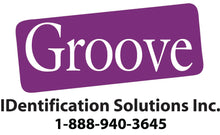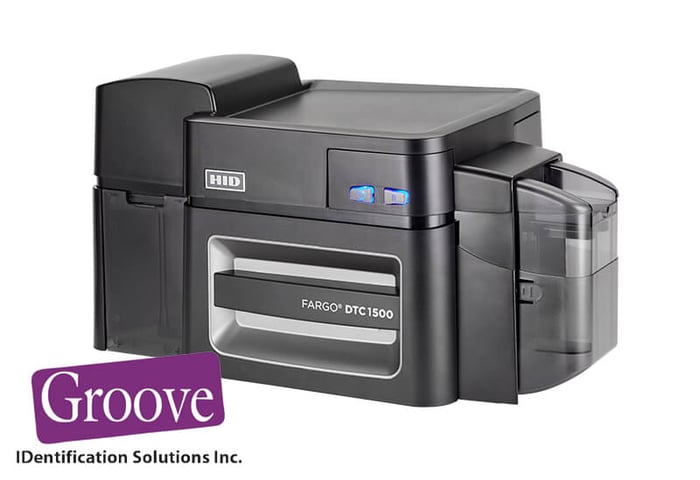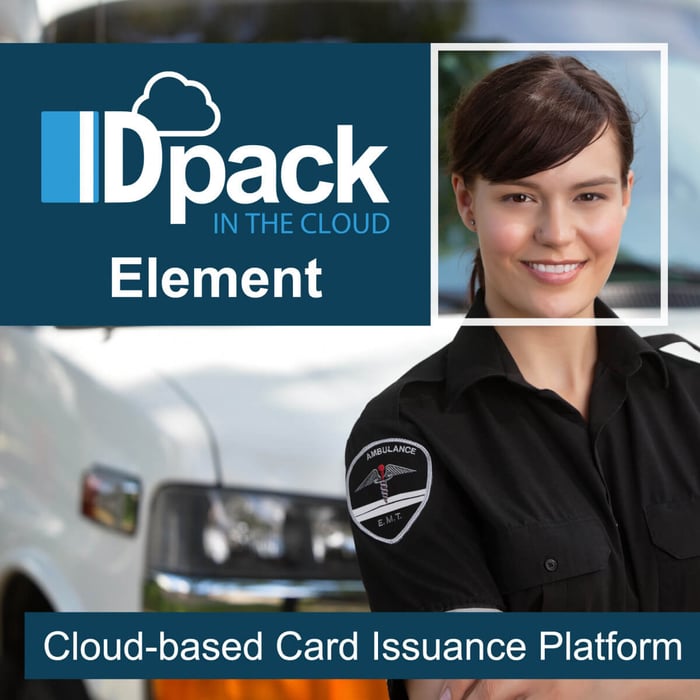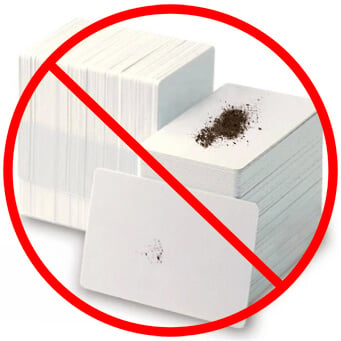Ten Things to Remember When Choosing an ID Card Printer
Once you’ve concluded that your facility should issue personalized ID cards to all staff, your next step is to work out how you’ll produce them onsite. Every time a new employee comes on board, you’ll need to promptly issue their new badge so that they can get in and out, and people know that the new person wearing the ID badge belongs there.
You’ll need a specialized ID Card Printer to produce your ID cards, and there are multiple considerations. In this post, we’ll walk you through the ten things to remember about ID Card Printer features as well as pitfalls to avoid.
1. Know Your Card Requirements Before You Buy
As with any major purchase, it’s essential to define your requirements before you start shopping. It’s crucial for ID card printers because there’s a wide range of specialized printing features available in the market, and the equipment has various price points. As always, your goal is to satisfy your requirements without breaking the bank.

Begin by asking yourself why you’re issuing ID cards in the first place. Is it for employee identification or access control for example? Another consideration is how the cards should look. Some pricier printers can cover the whole card surface, while other more affordable ones have to leave a white border around the edge. Is this important to you?
You also need to think about how durable the cards need to be. For example, if you’re going to be issuing these cards to students or temporary staff who use them for a year, after which you discard them, you can save money by using a printer designed for less expensive card stock.
If you’re expecting permanent employees to use the same ID card for their entire tenure with your company, you’ll need something sturdier. If you have outside workers, you’ll need to consider the effects of direct sunlight, rain and dirt on your cards. If employees will be swiping their cards through a card reader, you’ll need to factor that in as well.
2. Understand the Difference Between Direct-to-Card and Retransfer Card Printers
Direct-to-card printers are more affordable than retransfer card printers. They’re also faster. On the other hand, retransfer card printers produce more attractive ID cards. It’s a trade-off you’ll have to make in choosing your ID card printer.
Most of our customers rely on direct-to-card printers, and most of them find them suitable for their needs. One thing to bear in mind is that there’s a lot of wear and tear on the print head with a direct-to-card printer, whereas retransfer card printers have less friction.
Retransfer card printers produce a nicer-looking card in two main ways. First, they can print right out to the edge, so the card doesn’t have a white margin around the outside. Second, they can produce more vibrant colours, so your photo images will be more lifelike, and you’ll be able to match your corporate colours more accurately.

Another reason you might decide to invest in a retransfer card printer is to accommodate smart cards. Smart cards have a tiny antenna inside, and this can cause slight variations in the card surface. Retransfer card printers do a better job of printing on uneven surfaces than direct-to-card printers.
The retransfer printing process involves buying more supplies, like ribbons and film. They also work best with better-quality composite PVC-PET card stock. All of this means that they generally cost more to own and operate, but they also do a beautiful job.
3. Measure How Much Room You Have
Just like when you set up a printer in your home office, ID card printers also come in multiple shapes and sizes. You’ll need to size up the location where you plan to install the ID card printer and work out how much space you have.
Some ID card printer models help you save space by having the input and the output hoppers on one side of the machine. This setup saves you the space you’d otherwise need to accommodate the output hopper on the opposite side.
4. Plan for Future Upgrades
You may not want all the bells and whistles for your initial implementation. Even so, there might be “nice-to-have” features that you can foresee needing down the road. Some ID card printer models can support your company’s changing needs by offering “field upgrades.”
Field upgrades are plug-in modules that you or your IT staff can install in your existing printer at your site. You can get field upgrades to handle dual-sided printing or to encode a magnetic stripe or smart card.

There are also field upgrades for card lamination, to increase your hopper capacity or to install the same-side hoppers we discussed above. The main point is that some printers can accommodate field upgrades, and some can’t. You might end up having to trade in your printer to meet future needs instead of opting for a simple plug-in if you make the wrong choice upfront.
5. Know Your Company’s Computer Operating System
Most ID card printers are designed for Microsoft Windows™ environments. You’ll want to involve your IT department to ensure that your chosen device is compatible with your existing network.
If your facility uses Apple™ hardware and the macOS™ operating system, your choices will be more limited, but you’ll be able to find a suitable device. You’ll save yourself and your systems staff many headaches if you carefully check the system requirements for the printer driver that comes with your device and make sure that IT can support them.
6. Plan for Network Connections
Just about any ID card printer will come with a USB connection and Ethernet out of the box. Most of the time, our customers connect ID card printers directly to one dedicated computer in a location, so USB meets their needs. However, if you want several staff members to be able to access your new printer from their workstations, you’ll need to network it.
In that case, you’ll need to work with IT and decide whether to go with an Ethernet (hard-wired) or WiFi (wireless) network connection. Some models come with these connections, but you’ll want to verify that your selected printer has that feature.

7. Think About Using Both Sides of the Card
Like office printers, some ID card printers have one-sided or two-sided modes. It can be handy to design a two-sided card for your facility. For example, you can put instructions on the back of every badge for what to do if someone finds a lost card.
Another application for two-sided cards is to have the photo and key identifiers on the front of the card in bold and less vital information on the back. Splitting the ID data makes your cards easier for your staff to read during a quick screening.
If your design entails using the flip side of the card, you’ll need a printer with that feature as well.
8. Consider Lamination
Some ID card printers can laminate each card. Lamination protects each card from sunlight, dust, wear and tear and rough handling. If your staff are going to swipe the cards every day, lamination is a great way to protect bar codes or magnetic stripes.
Lamination also makes a card harder to alter. A counterfeiter can’t make changes to the card without damaging the laminate. You can also incorporate holographic security features in the laminate that are almost impossible to fake.
9. Plan How to Encode Information on the Card
Most facilities that issue ID cards want to match them with card readers for efficient access control. If that’s your plan, you’ll need an ID card printer that can encode the information in a format supported by the reader.
You can use a barcode or one of those big square readable codes called a QR codes. You can also use a magnetic stripe. If you want to make it easy on your employees and reduce wear and tear on the cards, you can also choose contactless smart cards that staff don’t need to swipe.
There are encoders for all of these formats, but you’ll have to make sure that you choose a printer with the right encoder for your application.
10. Estimate Your Volumes Accurately
The security industry tends to group ID card applications into three categories in terms of volume. Low volume applications are anything up to 1,000 cards per year. Between 1,000 and 5,000 cards per year is a medium volume application. Applications that produce more than 5,000 cards per year fall into the high-volume category.
To choose the right printer for your facility, you’ll need to be able to rate your application’s volume accurately. You don’t want to overspend on a device intended for much higher volumes, but you also don’t want one that can’t support your workload.
Higher volume printers also come with accessories that can streamline your staff’s workload. These include things like higher capacity hoppers to save time feeding the blank cards into the printer.
Groove Can Help
As you can see, there are many things to consider when choosing an optimal ID card printer for your site. Groove’s support team is always available to support your decision-making and supply you with a device that meets your needs.
Our staff would be pleased to discuss your application and recommend ID card printer options. We can help you select a device that will support your current needs and that you won’t outgrow as your organization’s requirements evolve.
We can help you decide if a direct to card or a retransfer printer is right for you. We’re happy to discuss the range of features available and help you choose the one that meets your site’s current and long-term requirements.
We’d enjoy hearing more from our customers about the types of ID card printers they use. We’d be interested to learn more about the printer type you’ve settled on and how well it meets your needs. We’d also be pleased to answer any questions you may have.
By sharing information and your experiences, we can all keep our facilities safer.
Click Here to Contact us with any questions! We can help you pick the best ID Card Printer!




